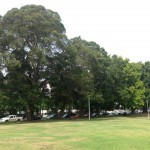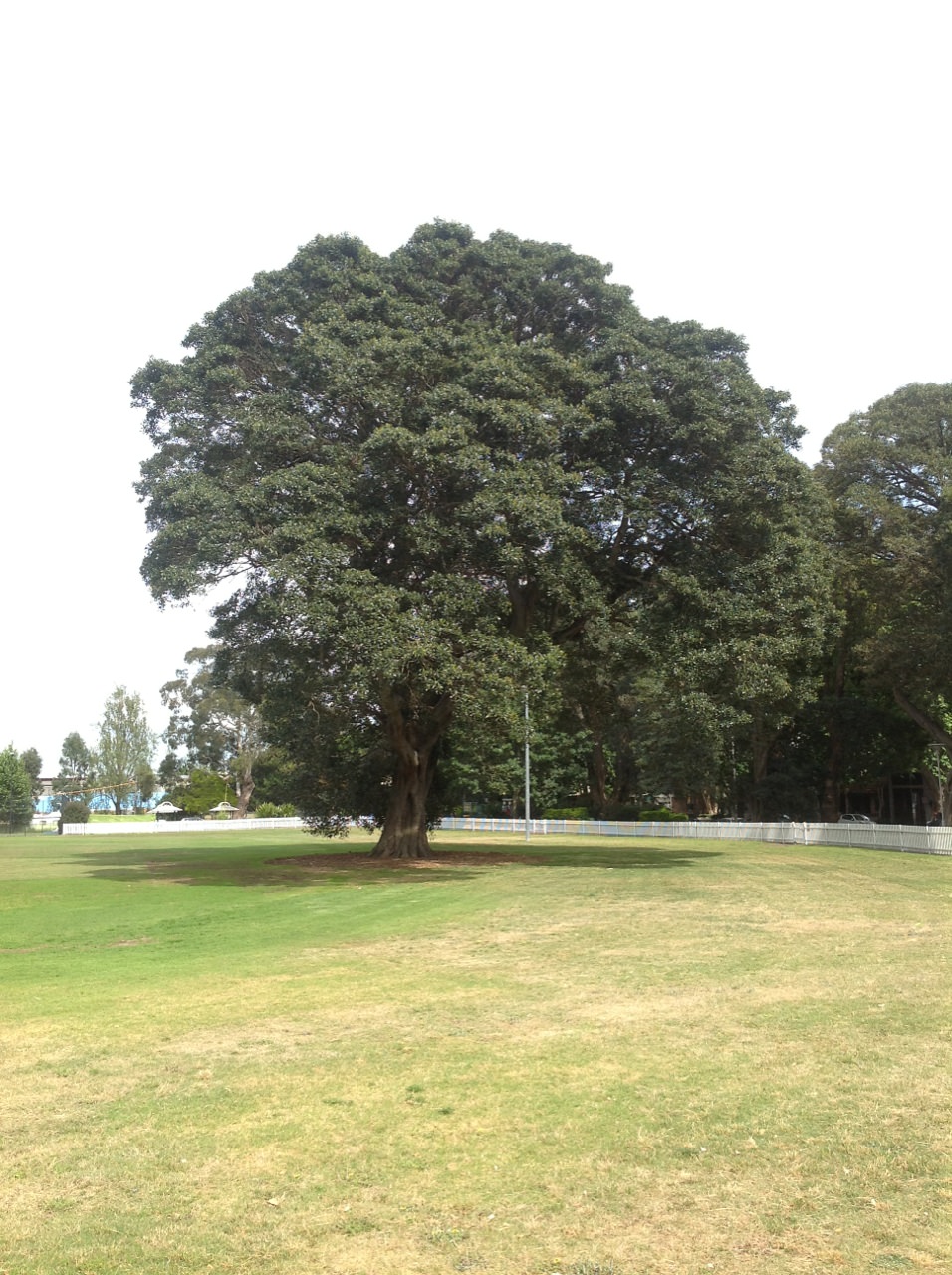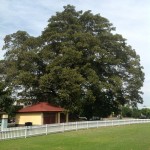Description
This park was designed in a similar thematic approach to other city parks during this period. The park boundaries were informally planted with predominantly native rainforest fig species sourced from the Illawarra region, north coast of NSW and south-eastern Queensland. This planting provided a very strong structural perimeter element surrounding the passive open space and, in this instance, extended to within the cricket oval perimeter.
The row of fourteen Port Jackson Figs and a single Camphor Laurel combine with an avenue of London Planes (Platanus x acerifolia) to create a dramatic sense of scale and place along the Buckland Street frontage (refer to Buckland Street listing in this Register).
Some of these Port Jackson Figs (glabrous leaf-form) are up to 25 metres in height and 25 metres in canopy spread with bases in excess of 2m diameter. Two mature River Red Gums (Eucalyptus camaldulensis), located along the Power Avenue frontage also date from an early period of park planting.
A single Moreton Bay Fig (Ficus macrophylla) of outstanding proportions occurs in the south-western corner of the park on Power Street. This specimen is one of the largest examples of this species in the City of Sydney LGA (30 metres in height/ 32 metres canopy spread with a 3500mm diameter base). This fig has a massive raised basal root area spanning 7 metres in diameter. This fig has individual significance at the City/ LGA level in terms of its representative and landmark values.
Significance
These trees have group significance at the City/ LGA level in terms of their aesthetic, historic, and social values. Many of the figs along the Buckland Street frontage have particular significance at the City/ LGA level as individual specimens. The row planting, group clusters and individual specimens of mature Moreton Bay Figs (Ficus macrophylla) and Port Jackson Figs (F. rubiginosa f. glabrescens) visually dominate the boundaries to Buckland Street, Wyndham Street and Power Street. Alexandria Park is scheduled in the City of Sydney Local Environmental Plan 2012.
Historical notes
In 1882, ten acres (approx. 3.93 hectares) of land was reserved to establish future parkland in this location. Alexandria Park was proclaimed in 1889, four years after the establishment of Redfern Park and Erskineville Park. This site was originally sandhills, but was earmarked for industrial development when noxious industries were forced out of the city in 1860. The first caretaker, P. Dawson of Wyndham Street, was appointed on a barter basis in 1895. He was given the sole right to graze his six cows on the park between the hours of 6 pm and 6 am, in exchange for keeping the park free of weeds and watering the newly-planted Moreton Bay and Port Jackson fig trees twice weekly during dry weather.
Further embellishment of the park continued through the Inter-War period (c.1915-1940). The pergola/ entry structure on the corner of Buckland Street and Wyndham Street together with associated planting of Lombardy Poplars (Populus nigra var. italica) were added in 1939. The American Cottonwoods (Populus deltoides) may have been added at this time also. Other more recent additions such as the Bangalay (Eucalyptus botryoides) and Swamp Mahogany (E. robusta) have tended to clutter the park and are considered either neutral or intrusive elements.












